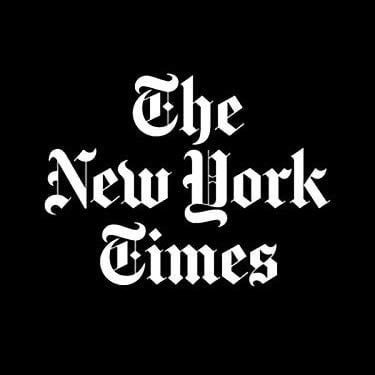Burbio's K-12 School Opening Tracker
To get our ESSER III Sample Data or to receive our weekly email newsletter
sign up below
Burbio's School Opening Tracker is a key resource for examining K-12 school operations during the 2020/21 and 2021/22 academic years. Click here for our methodology and email dennis@burbio.com to receive a digital file of the monthly state-by-state "reopening indexes" for the 2020/21 and 2021/22 academic years.
2020/2021 SCHOOL YEAR IN REVIEW

School Learning Mode By State 2020/21
The chart below shows the average in-person index for each state over the course of the academic year. The District of Columbia, not shown, would be last, behind California. In-Person Index weights % virtual instruction at 0, % hybrid instruction (2-3 days per week in-person) at 50 and % traditional (5-days in person) at 100). More on our Methodology
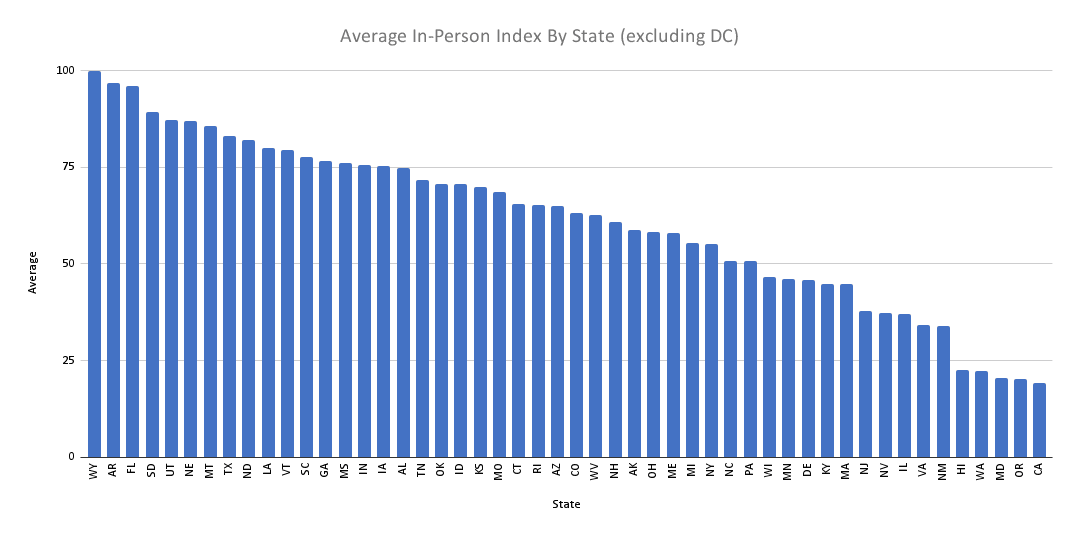
School Learning Mode by Grade Levels 2020/21
Below is our In-person Index by grades K-5, 6-8, 9-12 over the course of the year. K-5 students had the highest in-person index all year, and the gap became widest in the early Spring when "Always Virtual' states and big cities started returning to in-person and often brought in K-5 for in-person weeks ahead of older students. The gap narrowed as the year went on.
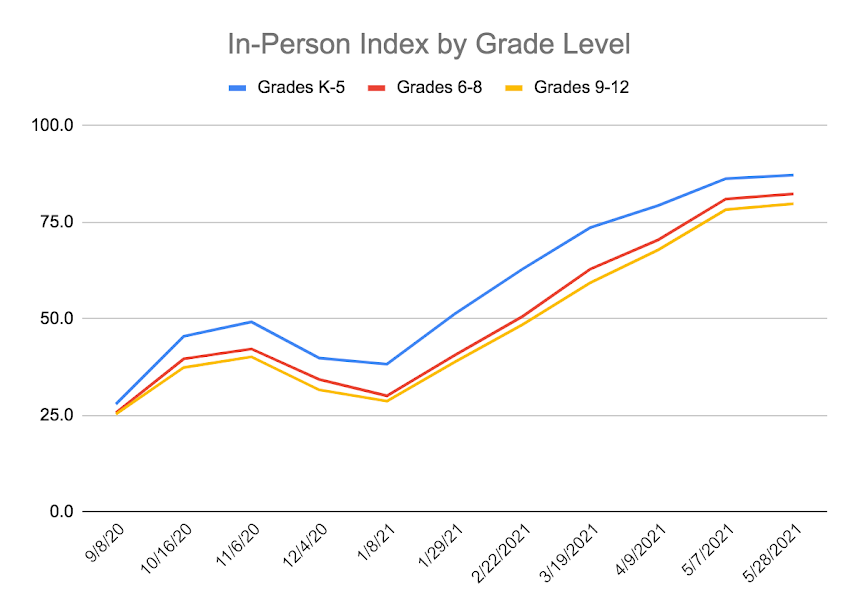
One of the defining characteristics of in-person learning in 2020/21 was the difference in urban and non-urban learning plans. We took a look at the Top 50 metro areas and measured the in-person learning index for their city school district, and compared it to the rest of the country. The following chart is weighted for student population over the course of the year.

School Learning Plan Changes Throughout the Year
In our Labor Day release we noted that in early September over 60% of US students were attending schools that were virtual only. Only 18% of US K-12 students were attending traditional schools during that period. The map indicates the high concentration of in-person learning in the Sun Belt and the Rockies:
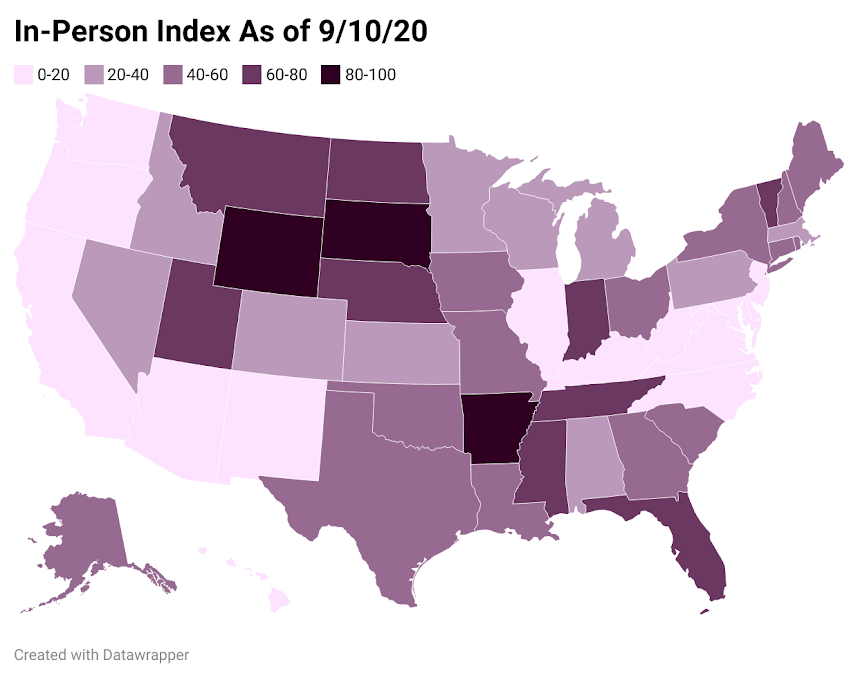
Over the course of the Fall, districts across the Midwest and the Northeast, along with additional Sun Belt districts, opened, and the virtual figure fell to 37%. As Covid rates rose around the country, we noted in our November 9th report that "introduction of in-person learning has slowed to an almost imperceptible level" and districts across the Northeast and Midwest in particular began to signal issues around staying open for in-person. The high point of in-person learning for the year to date - and for the next several months - is seen on our November 10th map:

Over the holidays rising Covid 19 rates, concern about holiday gatherings, and quarantining rules triggered widespread shutdown across the US and our virtual number rose to 55%. Our report on January 11th opens with a good survey of the previous two months, but we did note that many districts had plans to return students to the classroom later in January - which proceeded to occur. In our blog of January 25th, as the virtual figure continued to drop, we coined the term "Always Virtual" to describe states (in particular California, Oregon, Washington, Maryland, Virginia, and New Mexico) and cities that had never returned students to the classroom. Here is the map from January 10th.
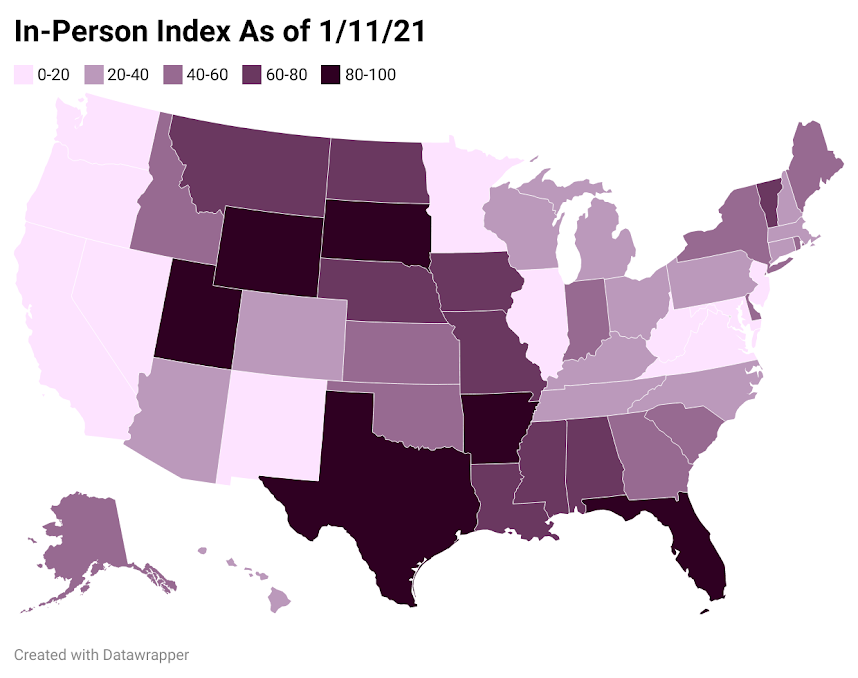
By the time of our February 8th blog post virtual numbers had dropped to early November levels. In general, the same districts that were open for in-person learning in early November had reopened. That left the "Always Virtual" states and cities, who proceeded to reopen gradually over the course of the Spring. Here is the map of early June:
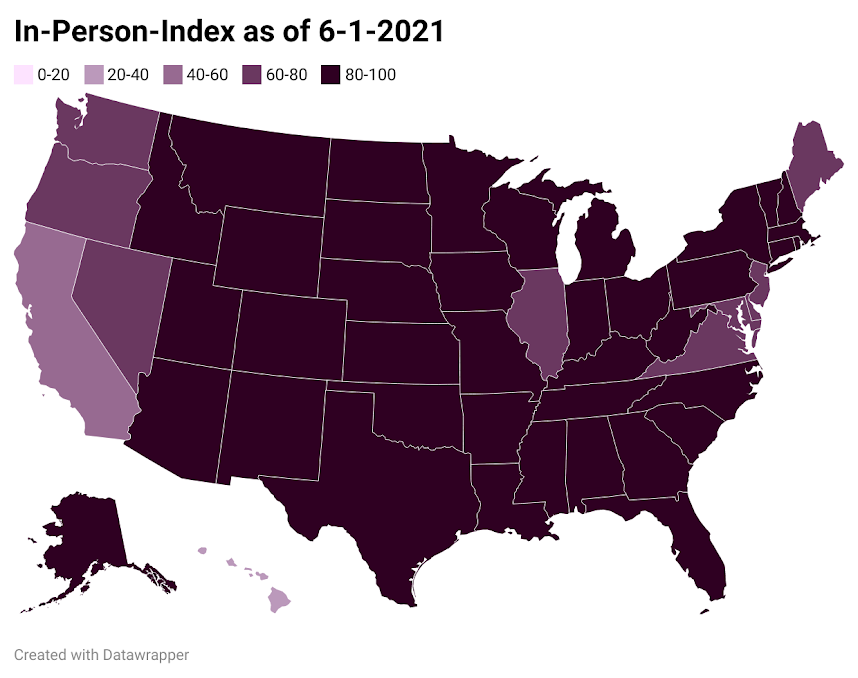
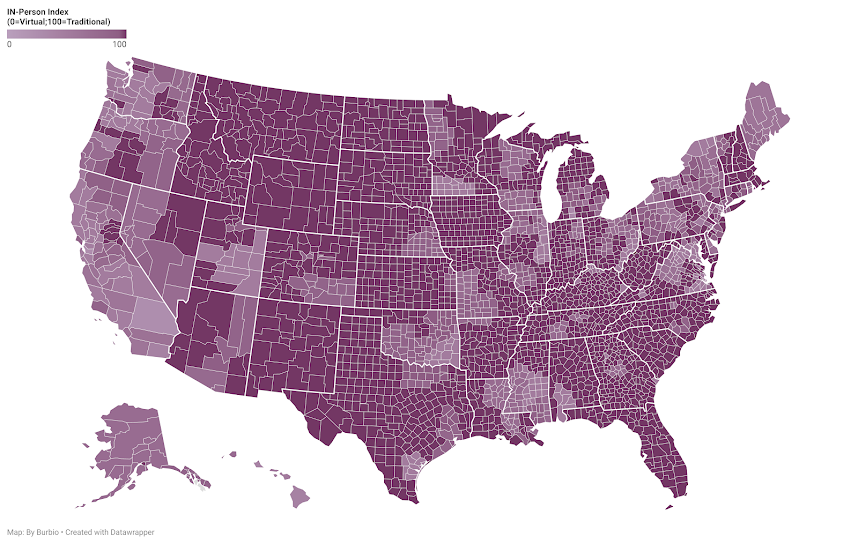
2021/2022 K-12 Pandemic Related Public Schools Disruptions
A pandemic related school disruption is defined as a school moving away from regular in-person instruction caused in some way by the pandemic (i.e., closures due to weather, natural disaster, security threats, etc. are NOT included)
Last updated: 6-25-22 at 7:00 am
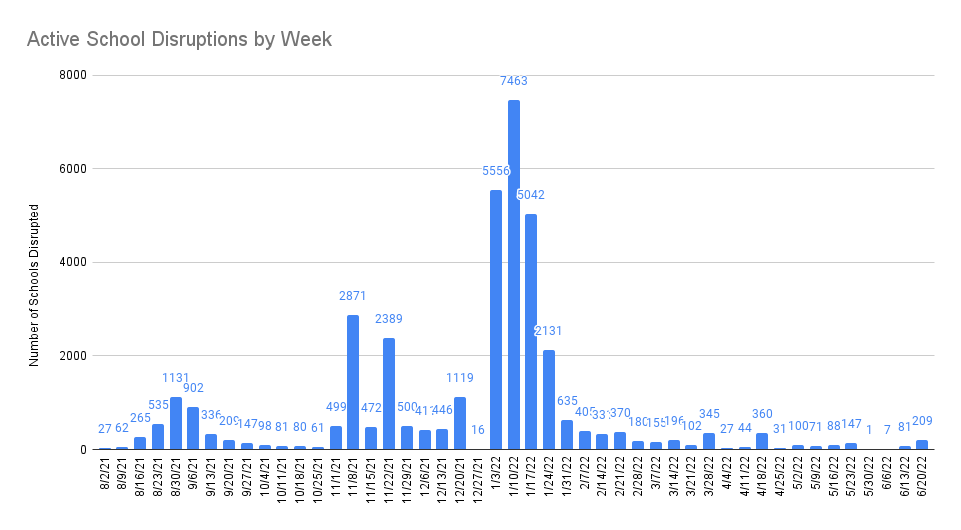
Burbio's tracker showed a peak of 7463 schools actively disrupted (not offering in-person learning) on one or more days during the week beginning January 10th,
School Disruption from January to June, 2022
School Disruption for 2021/22 School Year
